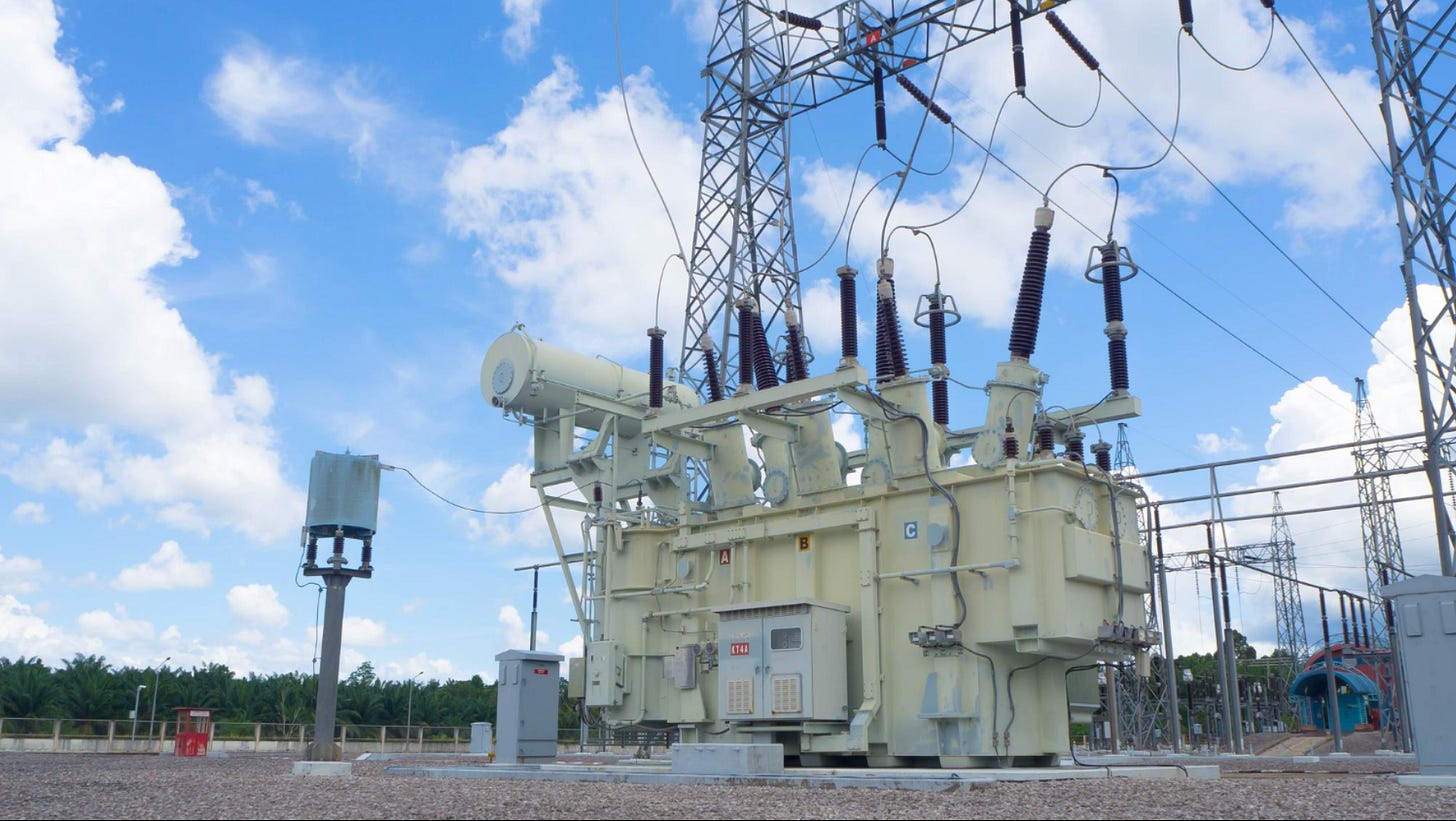Decline of Competence
How Trump's tariff-driven grid vulnerability exposes a broader pattern of sabotaged safety
America’s electric grid may be one weather event or rifle shot away from catastrophe. Yet the Trump administration’s trade war, cloaked in the language of national security, has made it harder than ever to maintain or repair the most critical pieces of grid infrastructure: large power transformers (LPTs).
These behemoths, up to 800,000 pounds each, are essential to high-voltage transmission. Only about 20% of the United States’ transformer needs are met domestically. The rest come from countries now facing tariffs of up to 145%, including South Korea, Germany, and China. Lead times for replacements can exceed two years. Custom units can take up to five. And if a Carrington-class solar flare or coordinated sabotage event hit the grid, there is no strategic reserve of spares. The result would not be a power outage. It would be a systemic collapse.
General Electric remains the only U.S.-based company with significant LPT manufacturing capacity, and even it cannot source the materials it needs, like grain-oriented electrical steel, without reaching across borders. That steel is primarily produced in Japan. Tariffs have made it more expensive or, in some cases, inaccessible. There is no American backup plan for this supply chain. And Trump’s policies haven’t built one, they’ve merely punished the importers.
Economist Richard Wolff calls this moment a structural break: an irreversible rupture in how the world views U.S. stability. “Every company that sells to or buys from the U.S. is now rethinking its business model,” he said recently. One of those companies is Legrand, a French electrical equipment manufacturer, which announced it is shifting some production from China to Vietnam and raising prices to cope with new U.S. tariffs. Legrand’s CEO acknowledged that key factories must remain in China due to scale, and that the company is working to qualify for USMCA protections to avoid the worst of the economic fallout. Tariffs, sanctions, and threats have made the United States a high-risk partner. And they’ve done nothing to rebuild domestic capacity in the sectors most vulnerable to disruption. The grid is only one of many.
It’s easy to treat this vulnerability as a one-off failure, the result of bad advice or misunderstood supply chain dynamics. But it’s not. It’s part of a pattern. Under Trump’s renewed assault on public institutions, the very agencies designed to keep Americans safe, from energy blackouts to viral pandemics, are being gutted. NOAA’s Habitat and Fisheries programs are being zeroed out. The CDC’s healthcare infection control advisory committee is gone. Civil service expertise is being purged under Schedule F. The Department of Transportation is being run by loyalists with no crisis management experience, even as ports, rail systems, and critical infrastructure face mounting threats. And at the Department of Defense, where stability and supply chain coordination are supposed to be nonpartisan priorities, Trump has installed ideologues who are openly hostile to NATO, dismissive of cyber warfare readiness, and more focused on domestic optics than operational continuity. The Trump regime is effectively stripping the house for firewood.
In 2013, a few small-caliber bullets fired at a California substation nearly triggered a blackout across the Western U.S. That wasn’t a fluke. It was a warning. A single point of failure in the grid, like the destruction of a high-voltage transformer, can ripple outward, tripping automatic shutdowns and overloading parallel systems in a cascading domino effect. Hospitals, data centers, emergency services, and water treatment plants can go offline. Traffic grinds to a halt. Supply chains stall. Even brief outages can result in billions in losses.
In 2003, a sagging power line in Ohio went unnoticed due to a failure in FirstEnergy's alarm system, caused by a software bug. This oversight prevented operators from recognizing the need to redistribute load after overloaded transmission lines drooped into foliage. The resulting cascading blackout affected approximately 50 million people across eight U.S. states and parts of Canada. Public transit systems shut down, water treatment facilities failed, and millions were left without power in elevators, subways, and high-rise buildings. The economic impact was substantial, with estimates ranging from $4 billion to over $10 billion.
A prolonged blackout across multiple states, particularly during extreme weather, would be a humanitarian crisis. Trump’s tariffs have made that crisis harder to prevent and nearly impossible to recover from, especially as he simultaneously purges the federal workforce of experienced civil servants capable of managing disaster response and infrastructure recovery.
The irony, of course, is that the Eastern Interconnection, covering Trump’s core political base, is in many ways even more vulnerable than the Western grid. Higher population density, aging infrastructure, and legacy transmission corridors make the eastern half of the country ripe for cascading failures. If the lights go out in Trump country, it won’t be because of immigrants, wind turbines, or woke energy policy. It’ll be because the man promising to “keep America safe” gutted the very systems meant to keep the power on.
This is the decline of competence by design, not by accident. And the lights may go out before the country wakes up.




Maybe the lights have to out and the shit the has to back up before the sleepyheads wake up?